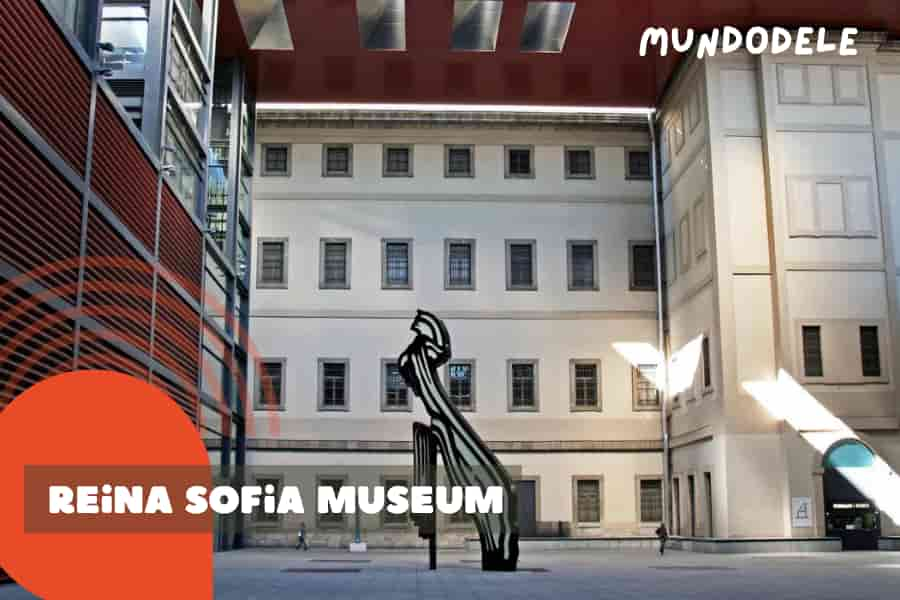Reina Sofía Museum Madrid – Tickets, Highlights & Visitor Guide

The Museo Nacional Centro de Arte Reina Sofía, better known simply as Reina Sofía, opened in 1992 as Spain’s national museum of 20th-century art. Its core is Spanish modernism and contemporary art, with international dialogues woven in. Here you’ll encounter Picasso, Dalí, Miró, Oteiza, and Tàpies, alongside international movements that shaped the century. The museum is vast, spread across several wings and courtyards, with exhibitions that constantly evolve.
Tickets & Entry Options
Buying a Reina Sofia Museum entry ticket in advance saves time and ensures you get the slot you want for seeing Guernica, the museum’s centerpiece. Several ticket types exist:
The museum offers free entry on certain afternoons and on Sundays. Expect queues. If your priority is Guernica, a timed ticket is best.
Collection Highlights
While Guernica is the magnet, the Reina Sofía is much more than a single canvas. Highlights include:
- Pablo Picasso – Guernica: painted in 1937, this monumental anti-war piece remains one of the 20th century’s defining artworks.
- Salvador Dalí – The Great Masturbator: surrealism in full force, unsettling and precise.
- Joan Miró – Woman, Bird, Star: playful abstraction with symbolic depth.
- Julio González – Sculptures: pioneering use of iron and industrial materials in art.
- Contemporary Installations: rotating shows of Spanish and international artists.
A Short History of the Museum
The building began life as Madrid’s 18th-century hospital, the Hospital General de San Carlos. In the late 20th century, it was repurposed as a museum, with architect Antonio Fernández Alba leading renovations. Later expansions by Jean Nouvel gave the museum its modern profile: bold red canopies, glass walls, and flexible spaces that reflect the dynamism of modern art. Today, Reina Sofía stands as a symbol of Spain’s cultural renewal after decades of dictatorship.
How to Plan Your Visit
The museum is spread across multiple buildings and levels. Plan at least 2–3 hours for highlights. A half-day allows for both the permanent collection and temporary exhibitions. Full days suit those who want to study modernism in depth.
- Start with Guernica (Room 206, Sabatini Building).
- Explore Dalí and Miró galleries.
- Move to contemporary Spanish sculpture.
- End with temporary exhibitions in the Nouvel building.
Visitor Experience & Practical Tips
- Accessibility: fully wheelchair accessible; lifts connect floors.
- Photography: restricted around Guernica; allowed elsewhere without flash.
- Facilities: lockers, café, and shop are available.
- Guided tours: English tours run regularly, covering highlights.
Nearby Attractions
The Reina Sofía sits next to Atocha station and is part of Madrid’s art axis. After your visit, stroll through the Retiro Park, see the Prado, or continue to the Thyssen. Barrio de Lavapiés, just behind the museum, offers multicultural food and street art.
Best Times to Visit
Early mornings or evenings are quieter. Free entry times are crowded but atmospheric. Spring and autumn give the best balance for combining museums with walks. Summer afternoons are busy; winter days are calmer and ideal for museum-hopping.
Suggested Itineraries
- Guernica
- One Dalí and one Miró room
- A temporary installation
- Guernica + surrealism (Dalí, Miró)
- Spanish sculpture
- Coffee + shop + Nouvel wing
- Morning: Guernica + Spanish masters
- Midday: Dalí + Miró + international movements
- Afternoon: rotating exhibitions
- Evening: Retiro Park stroll
